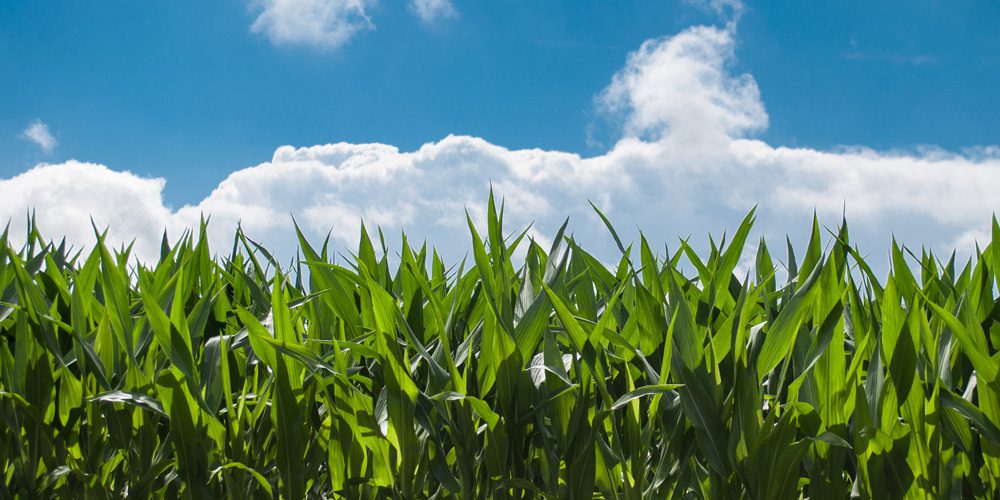Home » Could lab-grown meat and new fertilizers help feed the world?
Could lab-grown meat and new fertilizers help feed the world?

The global population will reach 10 billion by 2050. Three clean technology experts share their views on how we can feed everyone without trashing the environment.
We’ve been here before. In 1960, with the post-war baby boom in full swing, the global population hit 3 billion. Though that looks almost lonely by today’s standards, it sparked concern that the rapidly increasing number of mouths would soon exceed farmers’ ability to feed them. That anxiety propelled Paul Ehrlich’s controversial book The Population Bomb to bestseller status. On its cover was a stark prediction: “While you are reading these words, four people will have died from starvation.”
In the end, technology saved us. The Green Revolution arrived as chemical fertilizers became widely available and new high-yielding strains of wheat and rice were introduced in developing countries. Agricultural production soared and the feared widespread food shortages never materialized. The famines that did occur were mostly caused by war or weather, not overpopulation.
Can we pull off the same trick again? In November, the world’s population surpassed 8 billion and the UN predicts it will peak at 10 billion around 2050. But ramping up food production won’t be easy — we’re literally running out of room to grow. Agriculture already occupies 36 percent of the world’s land and uses 80 percent of water in places like California. Expansion would destroy natural habitats and add to the already catastrophic rate of biodiversity loss.
Canadian scientists are working on the problem from all angles. Farmers Edge, a Winnipeg-based company, sells a data platform that’s designed to help farmers optimize their operations and increase their harvests. Others, like Toronto-based Vive Crop Protection, are using nanotechnology to improve crop quality and yields through precisely formulated fertilizers and pesticides. Meanwhile, vertical farms are sprouting up across the country.
So, will technology come to the rescue again? Or do we need to rethink more than just how we grow crops? At the MaRS Climate Impact conference, three experts in clean technologies pondered these questions. Here are their takes.

We need to get back to sustainable practices
Jane Kearns, partner at cleantech venture capital firm Evok Innovations
“As we have scaled our ability to feed the population, we have inadvertently created an unsustainable food system that is destroying our environment and our health. Since the 1960s, we have been converting land from natural habitats that absorb carbon and filter water to agricultural uses. We have cleared forests for livestock and crops, and because of that we are losing biodiversity at an unprecedented rate. We grow massive amounts of one crop in the same place, creating a huge risk of pests going through the lot. And we have lost a ton of our topsoil, so nutrient density is diminishing.
“I don’t think there’s a technical solution. We need to think about how much meat we are eating, and we need to dramatically reduce the amount of land we use. And we need to think hard about regenerative agriculture [farming techniques that attempt to reverse soil depletion]. That is a more local and sustainable form of agriculture. How do we go back to these practices that are so smart and sustainable and create a biological cycle? The year 2050 sounds like a long way off, but it is 28 planting and harvesting cycles. That’s not a lot of time to make a monster amount of change.”

It’ll take massive tech advancement — or less exuberant lifestyles
Phil De Luna, sustainability expert at McKinsey & Co.
“When we come up against these existential problems, technical solutions can happen. At the turn of the 20th century, the world was running out of fertilizer because you had to get it from natural sources like bird droppings. The United States had wars with Spain over access to Pacific islands with bird droppings. Then the Haber-Bosch process was invented, which takes hydrogen and nitrogen to make ammonia for fertilizer. Now, I’m really excited about electro ammonia — it’s a way to make ammonia using electricity, sunlight, water and air.
“Can we feed 10 billion people? Yes. But I think it’s going to require some sacrifice or massive technological advancement in vertical farming or synthetic meat or whatever (and then who’s going to pay for that?). Ultimately, though, we Westerners have a level of exuberance in what we eat that is really unfair. The world could support a lot more people who are living off much less energy-intensive crops.”

We mustn’t turn farmland into an over-developed hellscape
Marcius Extavour, chief scientist at XPRIZE.
“We will be able to feed 10 billion. Look at California’s Central Valley, which grows a ton of food. If you drive up the highway you see avocado and almond plantations in what appears to be a desert. And somehow we’ve engineered our food system to make a lot of beef because that’s what we wanted. So there’s no doubt in my mind that we can do it this way, but should we? No we shouldn’t. I’m not interested in living in some technologically over-developed hellscape like the opening scene from the latest Blade Runner.
“One of my favourite expressions is ‘The future is already here, it’s just unevenly distributed.’ We usually interpret that as meaning we who live in this privileged part of the world have all the good stuff, like fancy phones and TVs, and other people don’t. But when it comes to agriculture, there are many other sustainable food and agriculture practices that other so-called less-developed communities are using right now. There are ways for us to look at those and integrate them. That’s not going backwards. It’s remembering and remixing things that we used to know how to do in a new way.
“What technology could make a difference? I tasted cultured meat — lab grown meat — recently. It was chicken made in a bioreactor. In my mind I thought it was gross, but it looked and tasted like chicken. It was weird, but it is a frontier in the food system that is coming.”
MaRS believes “innovation” means advancing Canadian technology for the benefit of all people. Join our mission.
Photo credit: Vive Crop Protection, MaRS Discovery District, Phil De Luna, Marcius Extavour
MaRS Discovery District
https://www.marsdd.com/
MaRS is the world's largest urban innovation hub in Toronto that supports startups in the health, cleantech, fintech, and enterprise sectors. When MaRS opened in 2005 this concept of urban innovation was an untested theory. Today, it’s reshaping cities around the world. MaRS has been at the forefront of a wave of change that extends from Melbourne to Amsterdam and runs through San Francisco, London, Medellín, Los Angeles, Paris and New York. These global cities are now striving to create what we have in Toronto: a dense innovation district that co-locates universities, startups, corporates and investors. In this increasingly competitive landscape, scale matters more than ever – the best talent is attracted to the brightest innovation hotspots.


